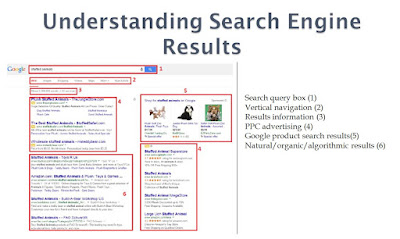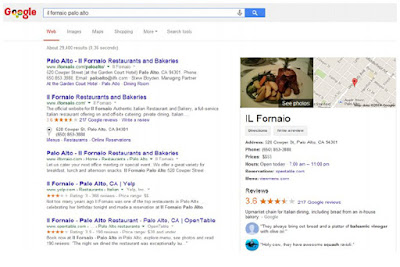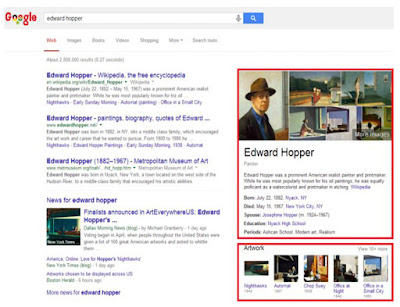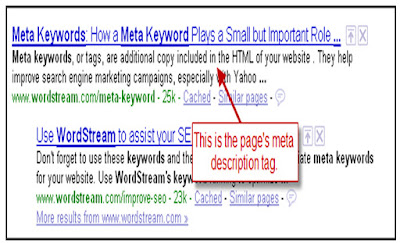FREE SEO COURSE l ONLINE SEO CLASSES l ONLINE COURSE FOR SEO FREE
by: Hamid Ali Shah
 |
| FREE SEO COURSE CHAPTER 1 |
CHAPTER 1, SEARCHENGINE OPTIMIZATION - SEO
} Key SEO concepts
} Search results and positioning
} Benefits of Search Engine Results
Page (SERP)
} Stakeholders in search
} Mechanics of search
} The SEO process
} Customer insights
} Analysis and review
} Keyword research and selection
} Content updates and layout
} Meta tags
} SEO sitemap
} SEO webmaster tools
} Inbound links and link building
} Ranking
}
Laws
and guidelines
KEY SEO CONCEPTS
} Process of making improvements on
and off your website in order to gain more exposure in search engine results,
and more exposure in search engine results will automatically drive more
traffic towards the web site which will lead the business.
} Search engine deliver more relevant
and authoritative material back to user in response of their search words. The
search engine determine this by evaluating lots of different factors including
your own website content, that how it is written and implemented in code as
well as how other websites around the internet are linking to our website. all
that is stuffed into a big and massive, complex algorithm.
} Other point which search engine have
in common is looking for the authority of the website while searching the user
query. is your web sites trust worthy enough to be listed in the search engine.
} One very best way of evaluating the
authority/trust worthiness of any web site by search engine is by evaluating
what other websites think of your website. this can be measure by the link
which other websites are pointing towards my website. the link pointing to your websites are
consider as one vote. to reduce the factor of abuse on internet the search
engine emphasizes on the quality of the links rather than the quantity of the
links. for example the links from
trusted website which are relevant to my website field of operation or any
reputable or Govt website have more weight of link then the website which is
hardly one month old. it is also called
the weighted democracy.
SEARCH RESULTS ANDPOSITIONING
} Understanding Search Engine Results
} the pages the engines return to
fulfil a query are referred to as search engine results pages (SERPs). Each
engine returns results in a slightly different format, and these may include
vertical results—results that can be derived from different data sources or
presented on the results page in a different format
UNDERSTANDINGSEARCH ENGINE RESULTS
 |
| FREE SEO COURSE |
} Each engine offers the option to
search different verticals, such as images, news, video, or maps. Following
these links will result in a query with a more limited index. In Last Figure,
for example.
SEARCH QUERY BOX
}
All
of the engines show the query you’ve performed and allow you to edit or
re-enter a new query from the search results page. If you begin typing, you may
notice that Google gives you a list of suggested searches below. This is the
Google auto complete suggestions feature, and it can be incredibly useful for
targeting keywords.
RESULTS INFORMATION
} This section provides a small amount
of meta-information about the results that you’re viewing, including an
estimate of the number of pages relevant to that particular query.
PPC (PAID SEARCH) ADVERTISING
}
The
text ads are purchased by companies that use either Google Adwords or Bing. The
results are ordered by a variety of factors, including relevance (for which
click-through rate, use of searched keywords in the ad, and relevance of the
landing page are factors in Google) and bid amount (the ads require a maximum
bid, which is then compared against other advertisers’ bids).
NATURAL/ORGANIC/ALG RESULTS
}
These
results are pulled from the search engines’ primary indices of the Web and
ranked in order of relevance and importance according to their complex
algorithms.
QUERY REFINEMENT SUGGESTIONS
}
Query
refinements are offered by Google, Bing, and Yahoo!. The goal of these links is
to let users search with a more specific and possibly more relevant query that
will satisfy their intent.
}
In
March 2009, Google enhanced the refinements by implementing Orion Technology,
based on technology Google acquired in 2006. The goal of this enhancement is to
provide a wider array of refinement choices. For example, a search on
principles of physics may display refinements for the Big Bang, angular
momentum, quantum physics, and special relativity.
NATURAL/ORGANIC/ALG RESULTS
}
Navigation
to more advertising
} Only Yahoo! shows this in the search
results. Clicking on these links will bring you to additional paid search
results related to the original query.
} Be aware that the SERPs are always
changing as the engines test new formats and layouts.
BENEFITS OF SEARCHENGINE RESULTS PAGE (SERP)
} These “standard” results, however,
are certainly not all that the engines have to offer.
} For many types of queries, search
engines show vertical results, or instant answers, and include more than
just links to other sites to help answer a user’s questions.
} Below is the example of these types
of results. The query in Figure brings back a business listing showing an
address and the option to get directions. This result attempts to provide the
user with the answer he is seeking directly in the search results.
 |
| FREE SEO COURSE |
 |
| FREE SEO CLASSES |
 |
| FREE SEO CLASSES |
}
This
Figure is an example of a search for a well-known painter. A Google search for
the famous painter Edward Hopper returns image results of some of his most
memorable works (shown in the lower-right of the screenshot). If the user is
interested in the first painting shown, he may well click on it to see the
painting in a larger size or to get more information about it.
STAKEHOLDERS IN SEARCH
} Each stakeholder in the SEO of a
website has a role to play. Starting with the web site auditor (your SEO professional) that performs the auditing of the structure, which reports to the
webmaster in order to correct all the obstacles that could hamper the indexing
of the website by search engines.
} Then the editor who works on the
text content, helped by the SEO professional, who ensures the text quality on
each website while respecting precise criteria.
} The SEO professional complete the
process by developing a program of communication with the search engines,
analyzing the best combinations of keywords of the website and in optimizing
the website. The SEO professional then becomes a consultant for all
stakeholders.
Mechanics of Search
} Crawling and Indexing
} Retrieval and Ranking
Crawling and Indexing
}
To
offer the best possible results, search engines must attempt to discover all
the public pages on the World Wide Web and then present the ones that best
match up with the user’s search query. The first step in this process is crawling
the Web. The search engines start with a seed set of sites that are known to be
very high quality, and then visit the links on each page of those sites to
discover other web pages.
}
The
link structure of the Web serves to bind together all of the pages that were
made public as a result of someone linking to them. Through links, search
engines’ automated
}
robots,
called crawlers or spiders, can reach the many trillions of interconnected documents.
 |
| FREE ONLINE COURSE SEO |
}
In
above Figure, you can see the home page of USA.gov, the official U.S.
government website. The links on the page are outlined in red. Crawling this
page would start with loading the page, analyzing the content, and then seeing
what other pages USA.gov links to.
} The search engine would then load
those other pages and analyze that content as well.
} This process repeats over and over
again until the crawling process is complete.
} This process is enormously complex,
as the Web is a large and complex place.
NOTE
} Search engines do not attempt to
crawl the entire Web every day. In fact, they may become aware of pages that
they choose not to crawl because those pages are not likely to be important
enough to return in a search result.
} The first step in this process is to
build an index of terms. This is a massive database that catalogs all
the significant terms on each page crawled by the search engine.
} lots of other data is also recorded,
such as a map of all the pages that each page links to, the clickable text of
those links (known as the anchor text), whether or not those links are
considered ads, and more.
} To accomplish the monumental task of
holding data on hundreds of trillions of pages that can be accessed in a
fraction of a second, the search engines have constructed massive data centres
to deal with all this data.
} One key concept in building a search
engine is deciding where to begin a crawl of the Web. Although you could
theoretically start from many different places on the Web,
} you would ideally begin your crawl
with a trusted seed set of websites. Starting with a known, trusted set of
websites enables search engines to measure how much they trust the other
websites that they find through the crawling process.
RETRIEVAL AND RANKING
} The next step in this quest occurs
when the search engine returns a list of relevant pages on the Web in the order
it believes is most likely to satisfy the user. This process requires the
search engines to scour their corpus of hundreds of billions of documents and
do two things: first, return only the results that are related to the
searcher’s query; and second, rank the results in order of perceived importance
(taking into account the trust and authority associated with the site). It is
both relevance and importance that the process of SEO is meant to influence.
} Relevance is the degree to which the
content of the documents returned in a search matches the user’s query intention and terms.
The relevance of a document increases if the page contains terms relevant to
the phrase queried by the user, or if links to the page come from relevant
pages and use relevant anchor text.
} You can think of relevance as the
first step to being “in the game.” If you are not relevant to a query, the
search engine does not consider you for inclusion in the search results for
that query.
} You can think of importance as a way
to determine which page, from a group of equally relevant pages, shows up first
in the search results, which is second, and so forth. The relative authority of
the site, and the trust the search engine has in it, are significant parts of
this determination. Ultimately, it is the combination of relevance and
importance that determines the ranking order.
}
In
order for Google to rank quality sites higher (and remove pointless link
directories and content farms) it keeps a list of websites known as seed sites.
}
These
are websites that it whole heartedly trusts will not engage in any black hat,
or even grey hat, SEO.
}
The
list is not in the public domain but some obvious ones would be Wikipedia, many
mainstream news websites (e.g. cnn.com), hand edited directories (e.g. Yellow
Pages), etc.
}
When
looking at other websites one of the factors Google takes into account is how
many links away it is from a Seed Site.
}
So
if Website A has a link from Wikipedia it is one link away from a Seed Site and
that's a positive result. If Wikipedia links to Website B which then links to
Website A this is still positive but does not have the same strength.
}
Many
professional link builders will spend a great deal of time trying to secure a link
on a Seed Site (or what they think is or will become a Seed Site) because of
how powerful this can be in Google's ranking decisions.
}
On-page
SEO is the practice of optimizing individual web pages in order to rank higher
and earn more relevant traffic in search engines. On-page refers to both the
content and HTML source code of a page that can be optimized, as opposed to
off-page SEO which refers to links and other external signals.
}
Content
of Page
}
Images
Alt Text
}
Title
Tag
}
URL
} Off page optimization refers to all the measures that can
be taken outside of the actual website in order to improve its position in
search rankings. These are measures that help create as many high-quality back
links (incoming links) as possible.
OFF-PAGE SEO ACTIVITIES ARE:
 |
| SEARCH ENGINE OPTIMIZATION FREE COURSE |
CUSTOMER INSIGHT:
 |
| SEARCH ENGINE RESULT PAGES |
ANALYSIS AND REVIEW
} A basic process for assessing a
keyword’s value
} Ask yourself
} Search for the term/phrase in the
major engines
} Buy a sample campaign for the
keyword at Google Adwords and/or Bing Adcenter
} Using the data you’ve collected, determine
the exact value of each keyword
} Long Tail of Keyword
RESOURCES
} Moz Keyword Explorer
} Google AdWords Keyword Planner Tool
} Google Trends
} Microsoft Bing Ads Intelligence
} Wordtracker’s Free Basic Keyword
Demand
Content Updates & Layout
} Content Is King
} Segmenting Your Site’s Audience
} Spelling and grammatical errors
} Reading level of the website content
} User Interaction
} Interaction with web search results
} Bounce rate, Time on site, Page
views per visitor,
} Link Analysis
Meta Tags
} SEO metadata is what appears on search engine
result pages (SERP) when a website comes up for certain queries. It includes
the title of the page and its met description (descriptive text below the
title).
 |
| BEST SEO COMPANIES IN THE REGION |
} A Sitemap is an XML file that is full of your
individual webpage’s URLs. It’s like an archive of every webpage in your
website. This file should be easily discoverable in your site in order for
search engine crawlers to stumble upon it.
} A Sitemap is usually used for the
purpose of letting the search engine crawlers follow the links to all your
individual WebPages so that it won’t miss out on anything.
} Sometimes we leave out URLs or hide
them from all visible pages because we don’t exactly want some of the users to
go there. As a result, some of these URLs are uncrawlable to search engine
spiders.
} We can still leave those URLs hidden
from some users without having to lose out on those pages not being crawled by
search engine spiders through including them in an XML Sitemap.
SEO WEBMASTER TOOLS
} Google Analytics
} Google Webmaster Tool.
} Moz Pro SEO Suit
} Others Software's available in the
Market.
INBOUND LINKS & LINK BUILDING
} For search engines that crawl the
vast metropolis of the web, links are the streets between pages. Using
sophisticated link analysis, the engines can discover how pages are related to
each other and in what ways.
} Used by search engines
} Global Popularity
} Local/Topic-Specific Popularity
} Anchor Text
} Trust Rank
} Link Neighbourhood
} Freshness
} Social Sharing
RANKING
} Rankings in SEO refers to a
website’s position in the search engine results page. There are various ranking
factors that influence whether a website appears higher on the SERP based on
the content relevance to the search term, or the quality of links pointing to
the page. Every search engine gives different weights to these ranking factors
which is why when you enter the same search term in different search engines
you will generally get different results.
} Ranking factors play a huge role in
SEO and the overall digital marketing strategy of a website. SEO, in
particular, is a specific discipline focused on the optimizations needed to
have a technically sound domain and delivering on content that is relevant to
users and ultimately attracts the right customers to your business.
Understanding which ranking factors are relevant to your industry is key to
becoming an authoritative domain – especially in the competitive industries of
e-commerce, finance and health.
LAWS & GUIDELINES
} Quality Optimization.
} Black Hat SEO tactics are
disapproved practices that increase page rankings in a SERP by going against
that search engine’s terms of service. Black Hat techniques range from keyword
stuffing, using unrelated keywords in page content, and invisible text to
doorway pages, page swapping, redirects and content automation.
} White Hat is preferable to Black Hat
in that said practices are ethical and sustainable. Black Hat practices are
effective, but are risky and can cause your site to be reported.
} Grey Hat SEO, on the other hand, is
SEO practice that remains “ill-defined” and/or “ill-advised” by search engine
published guidelines and which can be disagreeable. For example, click bait. Click bait refers to
a practice where someone posts something like an eye catching link or piece of
content that encourages a reader to click and read more.
ASSIGNMENT
} Read that all again and check any
sample website by using the tools which are mentioned in this course. Make a
Report as per your findings.
by: Hamid Ali Shah


No comments:
Post a Comment